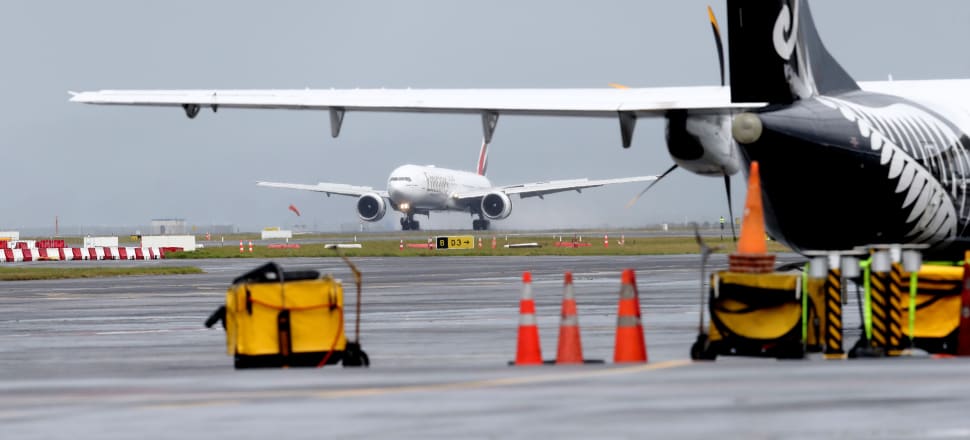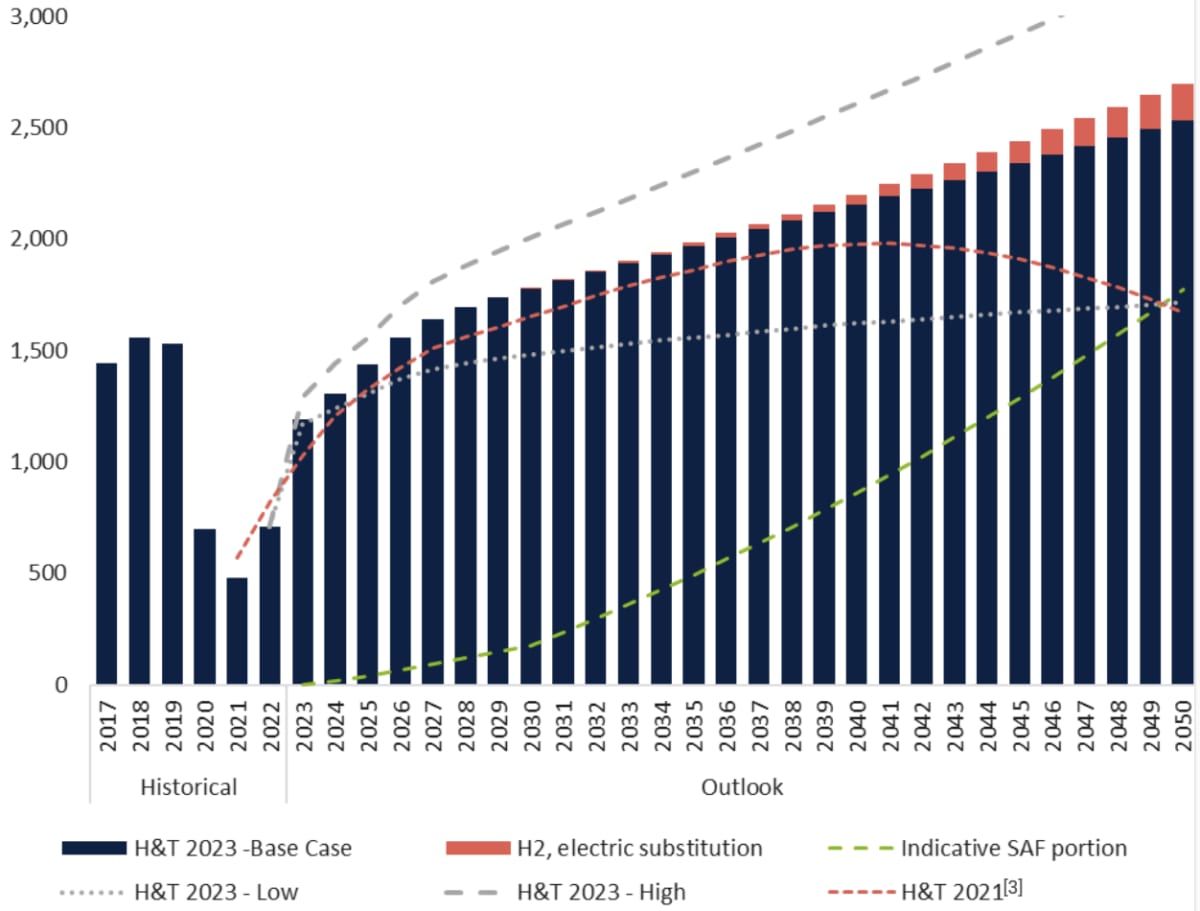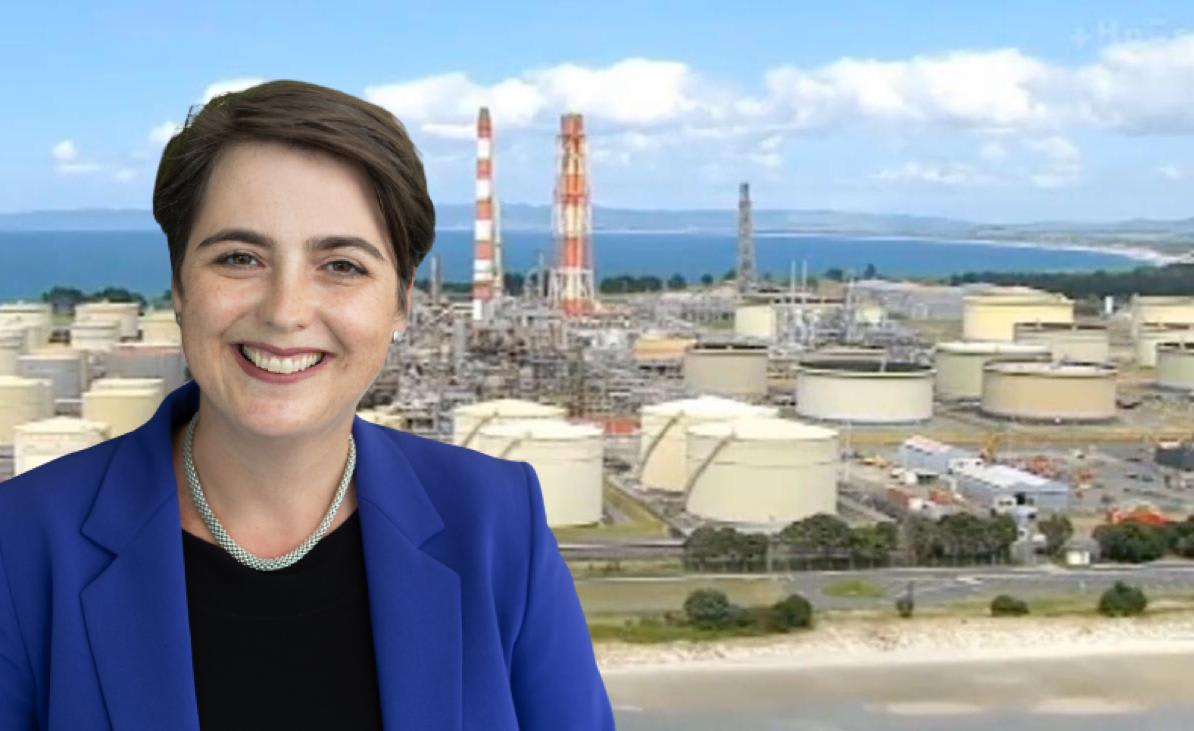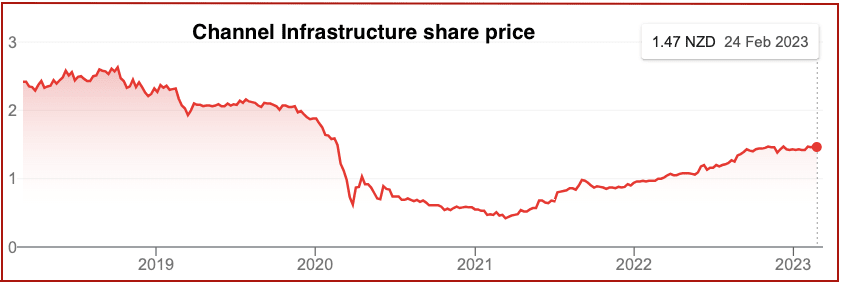
If you thought climate change fears might curb our love affair with flying, think again. A new report predicts we – and the stuff we buy and sell – will be flying more than ever
Jet fuel use from our biggest airport is set to increase steadily between now and 2050, according to new figures from Channel Infrastructure, the company formerly known as Refining NZ.
Released alongside its 2022 financial results announcement this week (the company reported its first profit in three years) was a graph showing the amount of jet fuel expected to flow through Channel’s Marsden Point storage depot near Whangārei. Volumes are forecast to increase from about 700 million litres in 2022 to about 2500m litres in 2025.
READ MORE:
* Climate crisis: ‘Flying with one eye on the future’
* The free ride for aviation is over
Marsden Point supplies Auckland Airport, which handles more than three times as many passengers a year as second or third-place Christchurch and Wellington Airports.
Marsden Point terminal projected refined fuel throughput (million litres)

On the more positive side, as the graph shows, hydrogen, electricity, and low-carbon sustainable aviation fuels will take an increasing share of the jet fuel market. However, fossil fuels will play a significant role right up to 2050.
The International Energy Agency (IEA) estimated flying will account for 3.5 percent of global energy-related CO2 emissions by 2030, up from just over 2.5 percent in 2020. A European Parliament report suggested the aviation sector’s share of total emissions could rise to 22 percent by 2050, as more people fly and other sectors decarbonise more quickly.
The IEA said flying could account for about 15 percent of global oil demand growth by 2030.
Channel Infrastructure’s long-term fuel outlook, from a report by Wellington energy consultancy Hale & Twomey and using forecasts from Auckland International Airport, anticipates demand for jet fuel doubling in 2023 over 2021 levels, returning to pre-Covid levels by 2026, and continuing to rise thereafter.
“The initial recovery in demand is more than just a temporary release of ‘pent up travel demand’ from closed borders,” the company’s presentation says.

“Aviation is incredibly strategic,” Channel Infrastructure chief executive Naomi James tells Newsroom. “Significant volumes of exports are being transported by plane. We have a growing population, which increases our travel, and tourism is a leading export market.
“Unless something fundamental changes, you are going to have growth.”
The impact for Channel Infrastructure of that growth is even more positive than for airlines or airports.
“In the five years pre-Covid, jet fuel demand increased more than passenger growth because of longer flights and more premium travel. We expect that to continue,” James says.
Net zero means little
Channel Infrastructure makes much of its environmental record in its results presentation. Closing the refinery and becoming an import-only terminal has seen its scope 1 and 2 greenhouse gas emissions (those from its own operations and from the energy it uses in those operations) reduce by 98 percent, or over 1 million tonnes CO2 a year, the company says.
The presentation doesn’t mention that shutting down Marsden Point doesn’t mean getting rid of these emissions – it simply means shifting them to refineries elsewhere in the world.
Channel aims to be net carbon zero in terms of scope 1 and 2 emissions by 2030. But that means little because it’s the scope 3 emissions (those from its oil industry suppliers and customers, and its vehicle and plane driving end-users) that do the damage.
James argues Channel is simply an infrastructure provider and is powerless. “We can’t control what fuel companies do and they're driving the fuel transition. Our job is to make sure we are keeping track with them. We can’t drive change."
She doesn’t see a climate change risk for Channel in terms of investors abandoning the company because of its reliance on the oil industry.
“We used to be in a simplistic world, where having capital flow away from anyone in the fossil fuel sector, while not driving change in demand, was going to magically fix the problems. All it does is bring supply shortages.
“We are all constrained by what is possible – reducing emissions while maintaining energy affordability. Fuel companies have an important role to play.”
Channel Infrastructure isn’t seeing investors move away, James says. “They welcome our proactive approach.”
They do. Sharemarket analysts on the results announcement conference call with James, incoming CEO Rob Buchanan, and CFO Jarek Dobrowolski, were celebratory about the improved financial results and the future prospects for increased volumes.
Channel Infrastructure reported revenue of $88.2 million in 2022 and net profit after tax of $12 million. The company was born in April 2022 when Refining New Zealand, the country’s only oil refinery, closed operations to become an import terminal and storage facility.

Its share price, down in the $0.44 a share doldrums two years ago, has hit $1.48 a handful of times over the past few months, including when the 2022 financial results were announced.
The role of sustainable fuels
While 25 percent of demand on New Zealand’s regional network is forecast to be electric by 2040 and 10 percent of short-haul demand could be met by hydrogen by 2050, James says, that’s unlikely to affect jet fuel demand in New Zealand, which is driven by “long-haul and extra-long-haul flights”.
Instead, it's 'sustainable aviation fuels', low-carbon alternatives to fossil fuels made using used cooking oil and forestry or agricultural waste, which are seen by Hale & Twomey as the main solution for decarbonising aviation.
Channel will be in a good position to handle these future fuels, as they can use the same storage and pipeline infrastructure as fossil jet fuel, James says.
The World Economic Forum’s Clean Skies for Tomorrow Coalition says as yet sustainable aviation fuel makes up less than 0.1 percent of all jet fuel used, but has a goal of lifting that to 10 percent by 2030. The UK government’s UK Jet Zero Council has the same goal.
The New York Times reported last week that United Airlines and other companies had launched a US$100 million fund to invest in low greenhouse gas jet fuel.
The Times article and the WEF and Jet Zero reports all say sustainable aviation fuel can produce “up to 80 percent” fewer planet-warming emissions than conventional jet fuel, although that figure is vague and the reports don’t quote a source.
At present, sustainable fuel is blended with fossil jet fuel, but the goal is to move to 100 percent at some stage.







